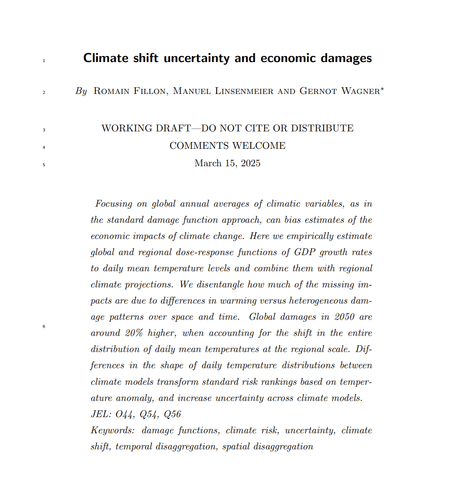Will Camels Roam Canada Again?
What we know about climate change is bad enough. What we don't could make it even worse.
You are cruising down the highway at 65 miles per hour, reading a book in your self-driving car. Your life is in the hands of a machine—an eminently benevolent one. Meanwhile, in the lane next to you, an 18-wheeler using decidedly last-century technology—relying on a fallible human driver—appears to be swerving your way.
Your car’s computer is on the case. Equipped with orders of magnitude more computing power than the Apollo moon lander, it determines with all the confidence it can muster that there’s a greater-than-50-percent chance—it’s “more likely than not”—that the truck is about to hit you.
You may want to look up from your book. More importantly, you want to know with certainty that your onboard computer will hit the brakes, even if there’s a 49-percent chance that doing so will be a false alarm.
If, instead of “more likely than not,” the danger were “likely,” “very likely,” or even “extremely likely,” the answer would be clearer still. Even if there’s a 95-percent probability of a crash, there’s still a 1-in-20 chance that nothing will happen—but no one would gamble their life on those odds. Your car’s computer hopefully will have engaged the anti-lock braking systems already.
A perfect self-driving car doesn’t exist yet, nor has the world solved global warming. But it’s surprising that, by the standards that we’d expect in a car to keep its occupants safe, the governments of the world haven’t stepped on the brakes to avoid planetary-scale global warming disaster—a 100-year-storm hitting New York every other year, frequent and massive droughts, inundated coastal cities. In 1995, the Intergovernmental Panel on Climate Change declared that it was “more likely than not” the case that global warming was caused by human activity. By 2001, it had progressed to “likely.” By 2007, it was “very likely.” By 2013, it was “extremely likely.” There’s only one step left in official IPCC lingo: “virtually certain.”
But we can’t possibly want to wait for that. The 1995 declaration of “more likely than not” should have been plenty to convince us that keeping up the status quo—for two more full decades, by now—was the wrong call. Of course, the world’s systems of governance don’t operate as slickly as an electric engine or an automatic driving algorithm dreamed up by the world’s best engineers. They’re a veritable mess; the technical political-science term used in the context of the climate, "regime complex," doesn’t sound much better.
The problem at hand is similarly messy: There’s no single technology to rescue the world from hitting the global-warming wall. It takes channeling the actions of seven billion individuals who can’t be counted on to do the right thing voluntarily. Changing policy, in turn, takes votes: votes against a system that is pretending to be doing just fine speeding along at 65 miles an hour.
Opinions differ on whether the 1997 Kyoto Protocol that followed on the heels of the “more likely than not” determination has had a significant impact on global emissions. No one would say that it was close to enough. There are hopeful signs in some places, but if anything, the world has since been speeding up on its collision course rather than slowing down.
So how certain does science have to be for the world to act?
Continue reading on The Atlantic.


